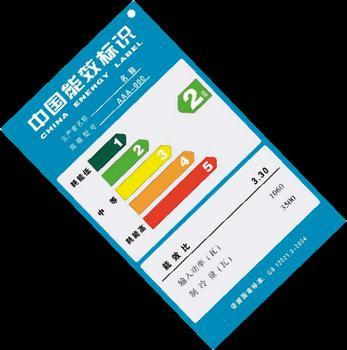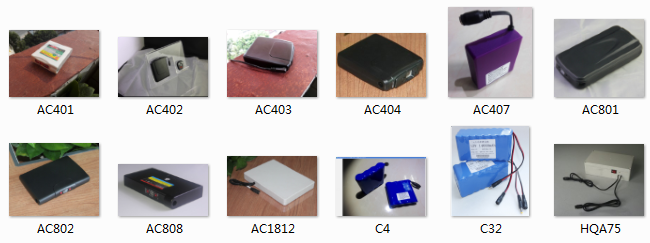What are the most hurtful indicators of energy efficiency?
 Although the price of energy-saving appliances is much higher than that of ordinary household appliances, with the improvement of consumer awareness of energy saving and environmental protection, whether energy saving has gradually become an important standard for consumers to purchase home appliances. However, the ever-erupting energy-scaping incident has greatly hurt consumers' enthusiasm for purchasing energy-saving appliances. Just after the Spring Festival, the quality inspection results announced by the Shanghai Bureau of Quality and Technical Supervision showed that there are problems with energy efficiency in many brands, and many well-known brands are on the list. This makes consumers less able to consume energy-efficient home appliances.
Although the price of energy-saving appliances is much higher than that of ordinary household appliances, with the improvement of consumer awareness of energy saving and environmental protection, whether energy saving has gradually become an important standard for consumers to purchase home appliances. However, the ever-erupting energy-scaping incident has greatly hurt consumers' enthusiasm for purchasing energy-saving appliances. Just after the Spring Festival, the quality inspection results announced by the Shanghai Bureau of Quality and Technical Supervision showed that there are problems with energy efficiency in many brands, and many well-known brands are on the list. This makes consumers less able to consume energy-efficient home appliances. Shanghai Bureau of Quality Supervision:
Energy-saving appliances have energy efficiency vacancies Before the Spring Festival this year, the Shanghai Bureau of Quality Supervision conducted a total of 17 batches of household washing machines manufactured and sold in Shanghai. After inspection, there were five batches of unqualified products, including Panasonic, Xiaoya, LG, and Power. And Konka and other brands. Among them, Panasonic, Konka, and Power all suffered from unqualified energy efficiency grades and were judged to have serious quality problems.
In the spot checks of refrigerators and televisions, the products of companies such as Weili, Tongfang, and Changhong also failed in the energy efficiency category. Among them, a 3D32A4000iV product manufactured by Sichuan Changhong Electric Appliance Co., Ltd., Tongfang Co., Ltd. All of the LE-39TX3900 products produced were judged to have serious quality problems due to unacceptable levels of energy efficiency.
In response to a number of well-known companies’ products being found to have problems with energy efficiency, experts told reporters that this was related to the implementation of energy-saving subsidies. Experts believe that the illegal cost of energy efficiency is low, and some companies convert consumer energy saving intentions into sales benefits through the use of energy efficiency indicators.
Business excuse:
Energy efficiency issues have nothing to do with fraud. Although the quality inspection department's random inspection results show that companies have problems with energy efficiency, the industry has also accused the existence of fraudulent claims. However, as soon as random inspection results were announced, almost no one company admitted to having problems, but they have adopted various methods. Qing himself, saying that the product being tested is not a successful product for energy-saving subsidies.
The person in charge of Panasonic (China) told this reporter that the company is investigating the reasons, but stressed that spot checks of problematic products are not energy-saving subsidies. The person in charge of Konka also emphasized that spot checks of product in question were not energy-saving subsidies, and stated that after review, the company had obtained the “reviewed†status. Both refrigerators and washing machines have products that have been identified as being unqualified, and the products that responded to spot checks are not energy-saving product models. "This is an old machine that is about to be eliminated." Changhong said that in the country's spot checks conducted a year ago, the 13 products it sampled to meet 100% of energy-saving Huimin record targets, implying that Shanghai's spot checks are not within the scope of energy-saving subsidies. The person in charge of LG told reporters that the sampling inspection report of the Shanghai Bureau of Quality Supervision was transferred to the Jiangsu Provincial Bureau of Quality Supervision on January 10, and the sampling inspection was completed on February 7. The company obtained the final inspection report on February 18th. In the final inspection report that has been obtained, all test results of LG washing machines are in line with national standards.
expert's point:
There are loopholes in the enterprise self-inspection and filing system. Although no company has admitted that it has failed to recognize energy efficiency, even companies do not accept fraudulent claims. However, the current system of self-declaration of energy-efficiency enterprises has facilitated the efficiency of some unscrupulous companies. The “Energy Efficiency Labeling Management Measures†stipulates that the energy efficiency labeling system adopts the “self-declaration and record filing by producers or importers, and the government departments strengthen the supervision and management†operation mode. Manufacturers send their own samples to participate in the test. Whether the tester is a third party Institutions have not made hard regulations, and competent companies can conduct tests in corporate laboratories. Because of this, energy efficiency has become the unspoken rules of the home appliance industry.
Lu Jianguo, deputy chief engineer of the China Household Electrical Appliances Research Institute, believes that the phenomenon of virtual consumption of energy in household appliances is present. This is because some laboratories responsible for detection of energy efficiency are under the scrutiny, but also because some testing units or laboratory hardware are not up to standard. Some companies may use the detection error to make a fuss about the critical value of the energy efficiency level. For example, the energy efficiency of Class 2 is marked as Class 1 energy efficiency. However, the problem of energy efficiency culprit is more common in small and medium-sized home appliance enterprises and low-end and middle-end home appliances. Some small businesses There is simply no way of knowing what the energy efficiency label is. There is also a behavior of disorderly labeling and labelling.
Taking washing machines as an example, the washing ratio and energy efficiency level in the washing machine industry are common. Because the washing ratio, the power consumption, and the water consumption of the washing machine are mutually restrictive, it is more important to monitor and punish violations. After being falsified, it is often only announced and there are no heavy penalties. The implementation of the energy-saving products benefiting the people policy that was implemented last year has very strict implementation of subsidies. Voids are not always used to make up for fraud, mainly to sell well and make more money, because to really improve performance, we need to invest better materials and Higher costs.
However, with the emphasis on the construction of laboratories and the strengthening of supervision, the problem of energy efficiency and falsification has been changed. In the last year's test data of the China Household Electrical Appliances Research Institute, the product qualification rate has greatly improved compared to 2009. From the perspective of low-cost products, there is a higher probability of energy efficiency.
Xu Dongsheng, secretary-general of the China Household Electrical Appliances Association, pointed out that it is not possible to easily judge the energy efficiency level of a company's imaginary standard through several spot checks in order to defraud. In the spot check, it was found that the erroneous label of energy efficiency was a problem in development. Subjectively deliberately misrepresenting should be handled seriously. Of course, there were errors in the test.
Recap history:
Energy efficiency ambiguity allows companies to get caught in the swindle. Suspects in the interview found that the energy efficiency culprit has always existed in the industry, especially since the energy-saving products Huimin project has been implemented, the energy efficiency vacancy has even developed into the unspoken rules of the industry, and has been criticized. Some enterprises have repeatedly changed the information on energy efficiency in order to meet the subsidy requirements after the implementation of the energy-saving products and the Huimin project. This has also caused many consumers to be confused at the time of purchase.
Take color TV as an example, only energy efficiency index can reach 1.7 or above to enjoy energy-saving subsidies, but many companies’ products have a record index of 1.4 before the implementation of energy-saving products and Huimin project, which cannot reach the subsidy requirement. Therefore, after the implementation of the policy, no Small companies have changed this to 1.7, leading to being accused of fraud.
Not long ago, reporters saw on the China Energy Efficiency Label Online that, after the implementation of the energy-saving products Huimin policy, Haier produced a variety of flat-panel televisions to change product energy efficiency filing information. Among the 110 flat-panel TVs that Skyworth was selected for energy-saving subsidies, 38 model products were unexpectedly changed to record energy efficiency information.
Companies also have their own reasons to change the issue of energy efficiency filing information for companies that are skeptical. Liu Xiaozhi, president of Skyworth Group’s color TV business division, admitted in an interview that the energy efficiency index was actually changed. However, he believes this is because before the energy-saving products Huimin project was implemented, color TV companies would be in trouble for the province and would generally measure products with an energy efficiency index higher than 1.4. All are marked as "≥1.4". "Because there is no subsidy before reaching 1.4, it is a level 1 energy efficiency, and the index is not high any more." Liu Yuzhi pointed out that the introduction of the energy-saving subsidy policy broke this balance, only "≥1.4" Can not enjoy the subsidy, "In this way the company will re-apply changes in the measured data, hope that the products meet the requirements can receive subsidies, there will be energy efficiency index changes." Liu Yuzhi stated: "According to this, I have been accused of fraudulent compensation, and I have come to an early conclusion."
Haier related person in charge also said that Haier has made three changes to the same type of product, because the product's energy efficiency rating of 1.5 is reported before the release of energy-saving subsidies, the industry generally exists, is allowed. After Haier's product technology optimization reached 1.7 energy efficiency standards, it was re-reported, but there was no batch listing.
According to Skyworth and Haier's explanation, one explanation is “restore measured dataâ€, and the other explanation is “technical optimization, product energy efficiency upgradeâ€. However, analysts in the industry believe that in the current situation where China's energy efficiency index is mainly based on the “self-declaration†approach, lack of supervision will inevitably hurt the credibility of the industry, and it will also hurt businesses and consumers.
We make 14.8v battery packs for heated jacket, milwaukee heated jacket, dewalt heated jacket, heated motorcycle clothing, heated coat, milwaukee jacket, electric jacket, battery operated jacket, warm cloth, heated motorcycle gear, ravean heated clothing, heated blanket, electric blanket, heated throw, electric throw blanket, dual control electric blanket, cordless heated blanket, electric overblanket, powerblanket, electric under blanket, portable heated blanket.
capacity from 2200mah to 10Ah, 20Ah, 30Ah.

15V Heated Blanket Battery,Electric Blanket Battery, Heated Blanket Battery,Heating Pad Battery
Asarke Industry Co., Limited , https://www.asarke-industry.com